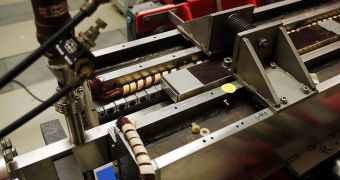Experts in Japan recently unveiled the first X-ray Free Electron Laser (XFEL) in the country, and only the second such facility in the entire world. Called SACLA, the laser is the result of a cooperative effort between two major Japanese research centers.
Scientists with the natural sciences research institute RIKEN collaborated closely with colleagues from the Japan Synchrotron Radiation Research Institute (JASRI) in developing the novel device.
SACLA stands for SPring-8 Angstrom Compact Free Electron Laser, and the facility is located in Harima. Experts say that it will provide them with a unique perspective into the intricate workings of fast chemical reactions, and also into the fascinating world of molecular structures.
The primary application of XFEL devices in general is breaking the diffraction limit. This is a basic limitation in physics that does not allow researchers to see objects smaller than the wavelength of the type of light they are using.
This fundamental limitation has prevented experts from looking inside cells, figuring out the way proteins and enzymes work, or figure out the secrets of cellular membranes. The free electron laser technology promises to finally defeat this limitation.
The way this is accomplished is by generating a type of light at a very unusual wavelength and intensity. Once an XFEL is activated, it can make out individual atoms and molecules in a sample.
Initial tests conducted at the new Japanese facility revealed that the laser is functioning as planned. It managed to produce a light beam just 0.8 angstroms (Å) wide, at an energy level of 7.8 gigaelectronvolts (GeV).
According to SACLA's specifications chart, the installation was built to produce light at an energy level of 8 GeV. Considering that these were only initial tests, experts are more than happy with the way the facility works thus far.
“The success of these initial tests marks the first step toward realizing the dream of Angstrom-scale measurements of atomic and molecular structure, setting the stage for full-scale experiments using the new XFEL,” a RIKEN press release says. “The success is also a triumph for Japanese craftsmanship, given that many of the components for SACLA were independently designed and built by Japanese manufacturers,” the statement goes on to say.
“With shared use of the new facility scheduled for the end of fiscal 2011, it will not be long before researchers begin using SACLA to push the boundaries of scientific knowledge, heralding a new era of exploration and discovery,” the document concludes.

 14 DAY TRIAL //
14 DAY TRIAL //